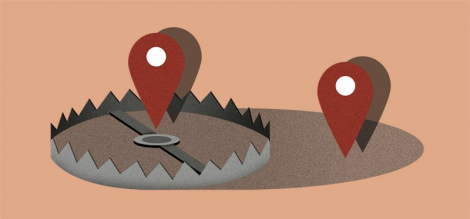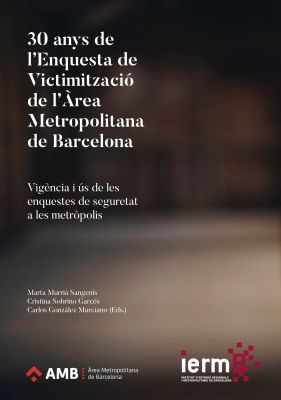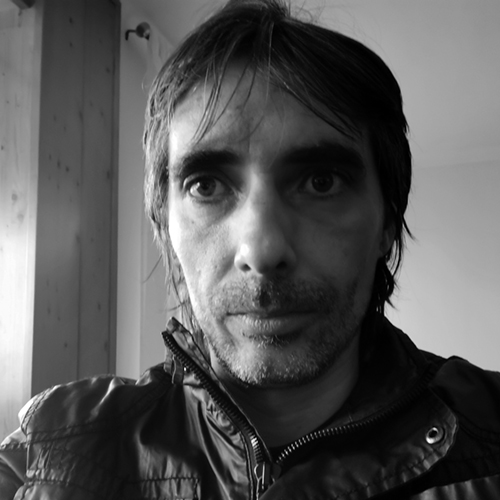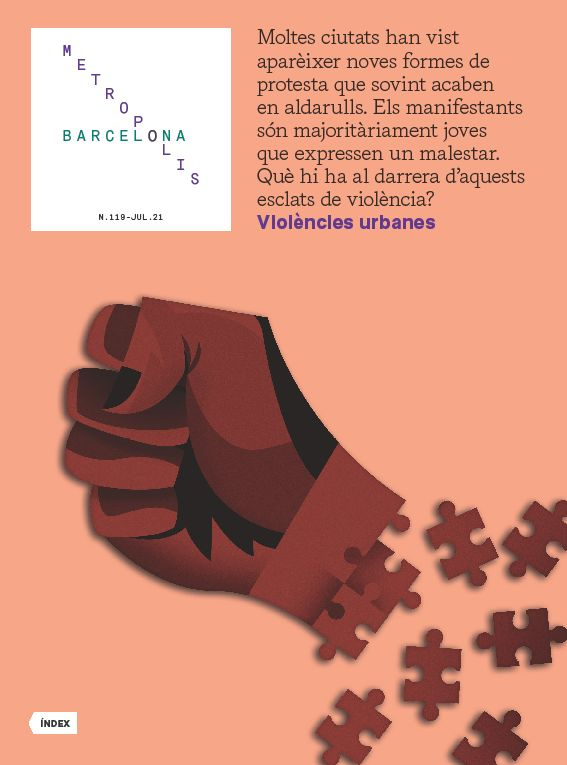
Conflict is inherent to life in society, and the pursuit of security in coexistence is a universal need. Zero risk is impossible. The causes of conflict evolve and, with them, so do the social perceptions of insecurity. Citizen concerns in the Barcelona metropolitan area in the 1980s were very different to today’s concerns. Social inequalities, problems of coexistence in the public space and the criminalisation of conflict are now key factors in the social construction of security.
Human beings know nothing but communal living, and when there is a group of people who live alongside one another, the need eventually emerges to build mechanisms to facilitate the safeguarding of the environment and the management of those relationships, which either constitute an objective threat to physical and material integrity, or are perceived as a danger to the continuity of life in society. Presented in this manner, the pursuit of security in coexistence becomes a universal phenomenon. In contemporary societies, responses to the issues and conflicts that surface in day-to-day coexistence tend to be handled professionally by government and justice institutions, and involve a wide range of operators, each with different degrees of influence, as well as proximity, in the territories.
It must be borne in mind that conflict is inherent to life in society. On the one hand, this means that zero risk is impossible; and, on the other hand, that in a setting as densely populated as the metropolitan one, where countless encounters and relationships are constantly taking place, some are likely to lead to explicit or tacit, systematic or occasional confrontation. The causes of conflict evolve over time because societies are not unchangeable realities and their structures are subject to transformations that unequally affect their populations and that have the capacity to generate new forms of differentiation and antagonisms among their inhabitants.
The above also applies to the Barcelona metropolis, and both the conflicts that emerge in day-to-day coexistence and how they are addressed have varied in recent decades, as demographic, economic and urban processes have altered cities and their spaces, and have changed the people who use cities and who live in them. Indeed, phenomena that did not occur before or were less problematic are a cause for confrontation and fear today. And, conversely, other situations now raise lower levels of concern than they did in the past.
In a situation like this one, it is imperative to have information systems in place that invite reflection and political decision-making. The Barcelona Institute of Regional and Metropolitan Studies, a research centre that brings together the local government and the university, has contributed to this task. As the body in charge of carrying out the Barcelona Metropolitan Area Victimisation Survey (EVAMB), it has a database on victimisation and security concerns that has a thirty-year series.[1] Studies have also been carried out on prevention policies and social uses of neighbourhoods. And, since 2017, impetus has been given to the Coexistence and Neighbourhood Relations Survey (ECAMB), which is aimed at studying the relationships of sociability, conflict and discrimination, as well as cases of relational loneliness. These questionnaires have gradually been executed and somewhat reflect the evolution of the issues that, in each period of time, concerned technicians and politicians, as well as the population of the metropolis. In observing this evolution, without attempting to be systematic or exhaustive, up to three major periods can be noted depending on the manner in which insecurities are manifested, interpreted, analysed and addressed.
Neighbourhoods to live and to work in. The uneven occurrence of crime and dangerousness
In the early 1980s, local authorities came up against an unexpected rise in urban crime and the emergence of a collective sense of concern over security. For this reason, Barcelona’s Urban Security Technical Committee was set up in 1983. Its aim was to develop a programme that would set out the basic aspects and put forward to the government team the measures to be adopted for effective action in the realm of citizen security. This was the first time that the democratic local authorities had become a key player and not a mere spectator of security policy. The resulting proposal spoke of institutional coordination, put forward a decentralised policy and raised the need for the implementation of information systems. The Victimisation and Opinion Survey on Security (EVB) thus emerged, in 1984, as a tool for information, reflection and the design of local policy.
[1]For further information, please see the book 30 anys de l’Enquesta de Victimització de l’Àrea Metropolitana de Barcelona. Vigència i ús de les enquestes de seguretat a les metròpolis [Thirty Years of the Barcelona Metropolitan Area Victimisation Survey. Validity and Use of Security in the Metropolis Surveys]. https://iermb.uab.cat/ca/altrepublicacion/30-anys-de-lenquesta-de-victimitzacio-de-larea-metropolitana-de-barcelona/.
The neighbourhoods considered dangerous were not (nor are they) those in which more criminal activities took place. Social inequality and urban marginality factors are involved, where stereotypes often come into play.
Over those years, the Barcelona victimisation index reported that up to a quarter of the Barcelona population had been subject to an act that they considered criminal during the previous year. Criminal activity was particularly high against vehicles, homes and in terms of robberies and personal assaults, and often manifested itself with doses of violence. The high level of victimisation was reflected in the population’s low scoring of the level of security in their neighbourhood of residence and, above all, in the rest of the city, with record-low scores in the series. Against this backdrop, the call for citizen security took on growing prominence in local demands.
The efforts to disaggregate the indicators by territory allowed us to observe one of the main defining features of security in this period: the unequal occurrence and spatial distribution of crime and the perception of dangerousness. Firstly, the reasons for crime and the attraction of centrality were corroborated: criminal activity is not distributed randomly in the territory, but regularities occur that run through the population’s pace of life. The attraction to centrality showed the intent and the existence of a rationale that allowed crime to be defined as a structure governed by the rationale of economic rationality: the adjustment of the means with a view to yielding the maximum benefit at the minimum cost. Secondly, in terms of the collective fear of marginalisation, the neighbourhoods considered dangerous were not (nor are they) those in which more criminal activities took place. When appraising the security or insecurity of a territory, social inequality and urban marginality factors are involved, where stereotypes come into play.
The post-Olympic metropolis. Uses of space and the social construction of security
During the post-Olympic years, Barcelona was on the world map. Neighbourhoods experienced major urban planning and regeneration movements. It had emerged from a crisis and unemployment rates dropped as a new productive and social space was built on a metropolitan scale. The tertiarisation of the economy and the modernisation of the city made it a powerful hub of activities and services that attracted a growing number of non-residents. The city and its spaces changed, and so did the people who used them.
This new period had less to do with the emergence of new manifestations of criminal activity than with a profound change in the way security was perceived. The Victimisation Survey reflected a gradual decline in victimisation rates, while the population’s appraisal of the level of security in their neighbourhood and the city as a whole reached record highs. Social concern over violence and drugs began to show a constant downward trend. In contrast, non-violent crime and the uses of squares, parks and streets emerged as the new concern, becoming the indicator of security during this phase. In a context in which the metropolis became a global urban society, shared spaces welcomed multiple actors with different needs and opinions. Conflict in the use of these spaces began to be seen in terms of security, control and social deviation.
Over these years, a series of studies have been carried out on the urban space and the social construction of insecurity, which found that, while the physical make-up of spaces contributes to a greater sense of security, the social use of these spaces (who uses them, with whom they are shared, what social practices are carried out...) is what most determines the likelihood of experiencing insecurity in them. And, whereas in the first period, the stereotype of dangerousness was based on drug addicts or petty thieves in the marginal neighbourhoods, the young population and their user habits of public space emerged as a new scapegoat.
This phase saw the emergence of concern for the design and maintenance of safe and secure spaces as well as the pursuit of mechanisms to regularise their uses, which was to culminate after a number of years with the proliferation of civic ordinances and would continue in subsequent periods and up to this day.
 © Nicolás Aznárez
© Nicolás AznárezThe physical make-up of spaces contributes to a greater sense of security, and the social use of these spaces is what most determines the likelihood of experiencing insecurity in them.
The global metropolis. Neighbourhood coexistence and security in the residential context
From the turn of the century, the internationalisation of the Barcelona metropolis and its demographic and spatial transformation continued. People’s residential experience changed with the rental boom and the influx of migrants to the neighbourhoods. Another economic and social crisis broke out, and the experience of inequality in terms of insecurity heightened. All of this altered the relations that the population established with their neighbourhood of residence and its inhabitants, and once again the focal point of security concerns shifted. During this period, neighbourhood relations gained momentum in the social construction of security, with a tendency towards a greater feeling of insecurity in residential settings characterised by economic difficulties. Insecurity was channelled through the problematisation of coexistence with migration flows that had settled in the metropolitan territory in recent decades.
In the new model of the metropolitan city, the patterns of victimisation changed – with new criminal targets and hubs –, mobility gained importance and the metropolitan scale was consolidated as a real space for criminal activity. Victimisation increased, especially due to non-violent individual robberies, but there was also a sustained and continuous rise in burglaries. Difficulties in access to housing, added to the rise in criminal activities in the living environment, led to coexistence in proximity to social issues that generated insecurity amongst residents. The perceived level of security dropped compared to the high points experienced during the previous period and, although it recovered and even stabilised, a persistent proportion of the population claimed that they experienced insecurity in their neighbourhood. While the neighbourhood was previously considered safer than the rest of the city, now the appraisals virtually do not differ: the reality of the neighbourhoods has changed, and they are no longer necessarily experienced as the nearby and known space.
In this context, data from the Victimisation Survey show that people who have experienced a conflict in their coexistence tend to live in the neighbourhood with a lower sense of security, in some cases more acutely than victims of a crime that is mostly non-violent. Based on the Coexistence and Neighbourhood Relations Survey, we also know that not all situations of neighbourhood conflict are associated with a greater experience of insecurity, and mainly occupations, uses of homes for drug consumption or trafficking, and fights or violent situations are the primary reasons, while noise, conflicts over stairwell maintenance and non-payments generate more malaise than insecurity. The analyses confirm a perception of greater insecurity in those neighbourhoods with a high residential density, small homes and where the population has risen (or a new population has been received). Residential instability means that the people who live in neighbourhoods and buildings change, while the most firmly established residents in the neighbourhood experience conflict and insecurity in their coexistence with the other (the poor, the newcomer, the racialised resident, etc.).
What characterises recent years, then, is the emergence of the residential environment as a strategic area for security management. The bases on which the feeling of insecurity is founded continue to be specified in crime and its violent or irrational behaviours. Furthermore, certain uses of shared spaces continue to be labelled insecure, and young people join racialised people and the manifestation of survival economies in the public space (waste collectors, homelessness, prostitution, street vending, etc.). Even so, the residential and neighbourhood experience has gained importance in the social construction of insecurity.
In short, without denying the role that criminal reality and violence have in the experience of insecurity, the trajectory of all these years reveals how the problems generated by economic and social inequality, the problematisation of coexistence relations and of the uses of spaces, and the criminalisation of conflict, added to the strength of stereotypes, are key factors in the construction of security. Because, referring to the words of Juli Sabaté, coexistence is an exceptional space for the pursuit of security. In light of this observation, by recognising and normalising diversity and conflict, we must continue working on a security management model that makes social and community prevention one of the cornerstones again.
Recommended publication
 30 anys de L'Enquesta de Victimització de l'Àrea Metropolitana de Barcelona. Marta Murrià — Carles González. AMB. IERMB.
30 anys de L'Enquesta de Victimització de l'Àrea Metropolitana de Barcelona. Marta Murrià — Carles González. AMB. IERMB.
The newsletter
Subscribe to our newsletter to keep up to date with Barcelona Metròpolis' new developments





